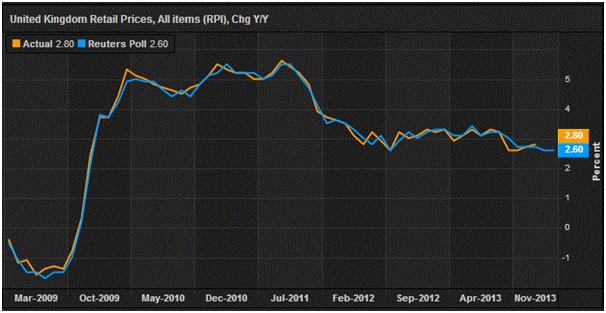
Last week proved to be interesting for the UK, with a big shake up of the savings and pensions industry in George Osborne’s budget meaning pensioners would no longer essentially be forced to take out annuities on retirement and could instead cash in at 55.
Meanwhile, public sector borrowing (excluding bank bailouts) actually rose more than forecast to £9.3 billion for February whilst the Confederation of British Industry trends survey indicated a further uptick in business confidence.
So, what does the week ahead hold for us?
Monday 24th March: US Markit PMI (13:45GMT), forecast 56.5 from previous 57.10:
The Markit Purchasing Managers Index (PMI) is a survey of selected companies and provides a forward looking indicator into the future direction of the economy by surveying output, new orders and employment across a number of sectors. A figure above 50 indicates ‘positive’ sentiment.
This month’s PMI figure for the US came in shy of forecasts at 55.5. This was against a predicted figure of 56.5, and is possibly another indicator that the US recovery isn’t as solid as we may think.
There are a few other indicators to pair this off with this week, however, with US Consumer Confidence and Home Price figures due out on Tuesday. With last week’s mortgage figures suggesting demand for housing is on the wane, however, it appears likely that the pace of last year’s growth will not be matched this year.
Tuesday 25th March: UK inflation figures (09:30GMT), RPI forecast to fall to 2.6 percent from previous 2.77 percent and CPI to 1.7 percent from 1.88 percent previously (both year on year):
The trend for UK inflation remains on a steady but slightly downward path following a strengthening of Sterling. When combined with the fact that booming property sales are providing a nice boost to tax receipts and growth figures as well as a feed good factor for the wider economy, we can bet that interest rate hikes aren’t likely any time soon.
Sterling is remaining strong against other currencies on the back of forecasts that the UK will increase rates sooner than anywhere else, however, so a downward spiral for inflation could put that into question.

UK RPI inflation: flat lining for the last two years.
Wednesday 26th March: UK House Price index (07:00GMT), forecast rise of 9.6 percent up from 9.35 percent year on year and 0.8 percent month on month:
With George Osborne extending Help to Buy until 2020 and ‘Buy to Let’ expected to boom further after the liberalisation of the retirement market no longer shoe horning pensioners in to annuities, people are on the lookout for signs the UK property market is overheating.
A forecast rise of 9.6 percent is nothing short of astronomical and hardly sustainable with incomes only growing by 1.4 percent. At this rate, it won’t be long until the earnings/lending ratio becomes stretched so far that First Time buyers are priced out even with government support for deposits.
What’s more, those that do hop on the ladder with 95 percent mortgages will be looking very exposed in the event of a rate hike or another downturn.
You do worry when even Vince Cable rounds on an act of government intervention and warns of an unsustainable recovery. You just don’t usually expect the Conservatives to be the ones deaf to criticism of government intervention.
Thursday 27th March: US GDP growth figures for Q4 2013 third estimate (12:30GMT), forecast rise of 2.7 percent (versus 2.4 percent second estimated and 3.2 percent first estimate) following better than expected consumer spending figures.
These figures are subject to successive revisions as more and more data gradually becomes available, lessening the need to rely on the forecasts. The forecast is expected to fall in between the original two at 2.7 percent, though still some way off the 3.2 percent forecast back when the US economy was racing off before tapering commenced.
Friday 28th March: Japan core CPI inflation (23:50 GMT on Thursday evening) forecast to rise 1.3 percent year on year.
Is Abenomics working? As we know, the key objective is to drive up inflation which has been dormant for years in Japan in an effort to get consumers spending again.
The problem is much of the inflation has been borne out by devaluation of the Yen ‘importing’ inflation, given Japan is reliant on energy imports – especially post Fukushima. It will be interesting to see what the components of inflation are this time.

Japan inflation: Slowly but surely rising out of deflation after a wave of monetary stimulus

COMMENTS
Please let us know if you're having issues with commenting.